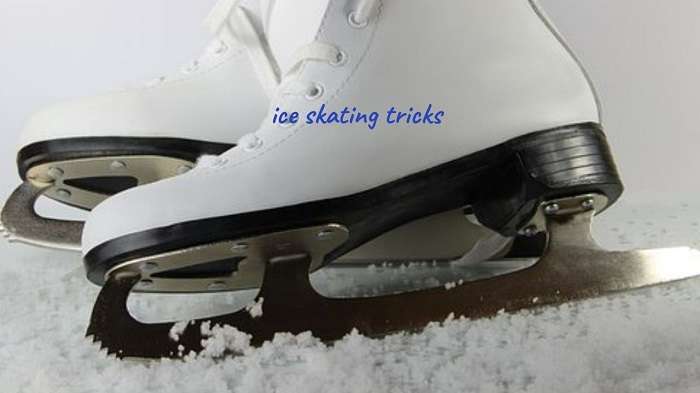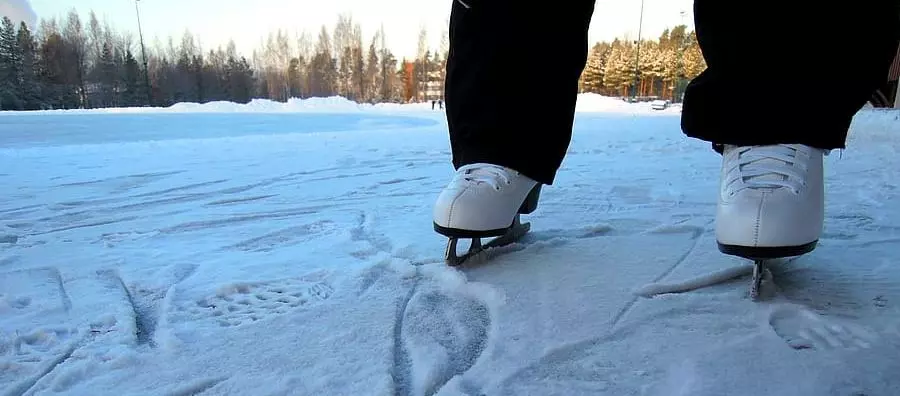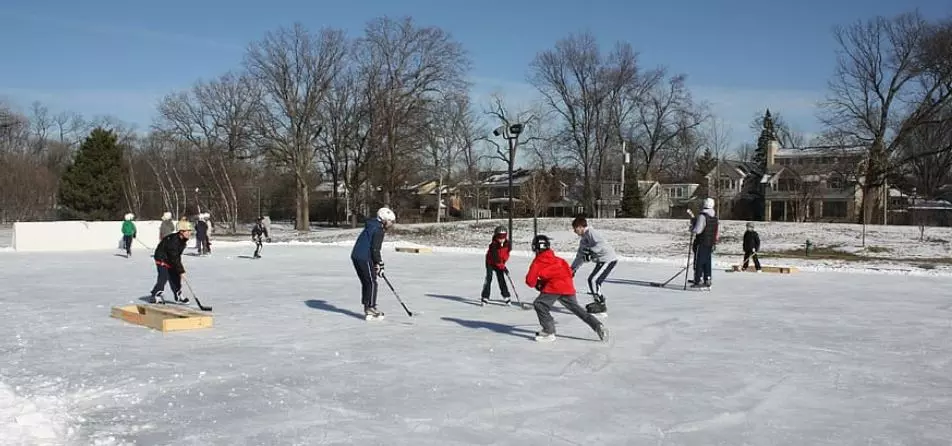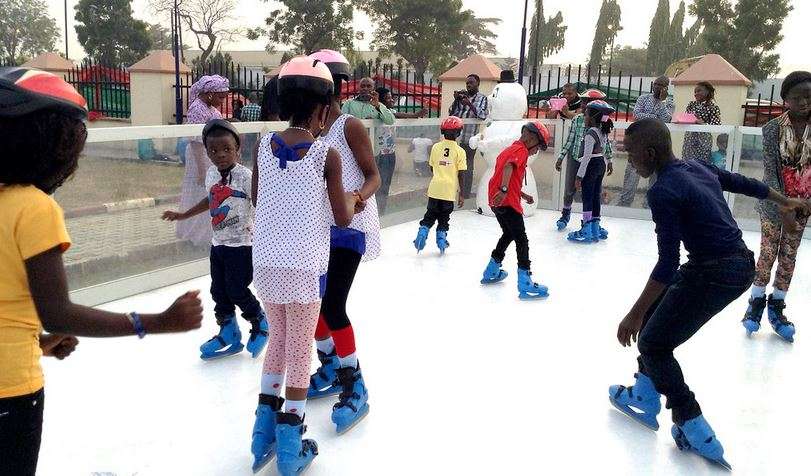Last updated on April 7th, 2022 at 09:11 pm
Even as a beginner, you can learn some cool skating tricks that will be helpful in the long run. This article will be beneficial to novice skaters of all types of skates. These moves can only be attempted by ice skaters wearing figure skates.
Skates with a toe pick at the front end of the blade are the most commonly rented skates at rinks. With practice, you should be able to skate backward if you can already skate forward. Both ice and roller figure skaters use the same technique.
Some popular beginner moves:
· A Confident Spiral
The Lunge
· Backward Crossovers
The Bunny Hop
· Backward Crossovers and the Bunny Hop
When you’re skating on traditional roller skates or artistic roller skates, simply replace the toe stop with an ice toe pick. And with that, I hope you’ve found these beginner figure skating tips helpful.
How do you do basic ice skating tricks?
The basics should take you anywhere from 7 to 10 hours to learn. That wasn’t accomplished in a single day; it took two months. It’s an hour or so once a week. Learning basic tricks is easier when you have a good grasp of the step-by-step sequence of the overall move.
It’d be even better if you could go twice a week. You will be able to sleep between each practice period if you go to the rink several times, which will help you learn faster. Below are some sequences to follow if you wish to learn some basic skating tricks.
Basic ice skating trick – Sequence one
Sit on the ice and then stand up.
· March across the ice with vigor.
· Glide forward on two feet
· Dip
· 6–8 forward swizzles in a row
6–8 backward wiggles in a row
Start with a two-foot or one-foot snowplow stop.
A two-foot hop in place is a bonus skill.
Basic ice skating trick – Sequence two
· R and L scoot pushes
R and L glide forward on one foot.
Glide the length of the skater’s height backward two feet.
Repeat twice with the Rocking Horse (one forward swizzle and one backward swizzle).
6–8 backward swizzles in a row
Turning two feet in place from forward to backward, clockwise and counterclockwise
counterclockwise
A snowplow in motion comes to a halt.
Curves are a bonus ability.
Basic ice skating trick – Sequence three
R and L are the backward outside edges of a circle.
R and L are the backward inside edges of a circle.
· Clockwise and counterclockwise backward crossovers
R and L make a forward outside three-turn.
· 4–6 advanced two-foot spin
Both directions must come to a halt when playing hockey.
R and L-side toe hops are bonus skills.
Learning a basic skill is a great place to start for new skaters who want to learn more about the sport. Every sequence introduces new skills and techniques, encouraging skaters to progress while having a good time in a healthy and social setting.
Figure skating techniques to kick off with
Whether you want to skate competitively or just for fun, the figure skating techniques in this section will come in handy. Are you ready? Let’s take a look at some of these techniques.
The Lutz
Apart from the axel, the lutz is the most difficult jump because it requires the skater to take off on one foot from a backward outside edge. Using the toe pick to help get into the air, reach behind and across your body to pick into the ice.
Numerous skaters struggle to get a proper takeoff and instead launch themselves from the inside edge, similar to a flip jump, earning the faulty jump the nickname flutz. With both arms extended overhead, American men’s figure skater Adam Rippon performs his version of the jump, dubbed the Rippon lutz.
Axel
Along with the flip, loop, toe loop, lutz, and salchow, it is one of the six-figure skating jumps. The only one, however, calls for the skater to leap into the air while facing forward.
For the landing to be backward, the axel requires an extra half revolution. A standard axel turns one and a half times, a double axel two and a half times, and a triple axel three and a half times. A quadruple axel has yet to be performed.
The salchow
The salchow is one of the easiest jumps to spot if you’re trying to figure out what the difference between an edge and a toe jump is. The Salchow skater does not use a toe pick, and the skater can be seen launching himself from the knee bend.
It begins on one foot’s inside edge and ends on the opposite foot’s outside edge. The base value of a triple salchow is 4.4 points. However, in the GIF above, Yuzuru Hanyu, a Japanese skater, performs a quadruple salchow, which is worth even more because of the extra spinning.
Camels spin
In this popular movie, the performer forms a “T” shape with his or her body. Skating is done with the performer’s stronger leg, while the other limb is stretched backward, straight behind the skater’s head.
The performer leans their neck forward during this spin, aligning their head with the straightened back leg. This technique may appear difficult at first, but with practice and patience, it can be accomplished. The camel spin requires balance and suppleness, which you will develop over time.
Flips
Figure skaters who attempt a flip jump glide back across the ice rink before actually launching into the air by continuing to push from the inside edge of their back foot and the toe-pick with their front skate. After spinning a full revolution in mid-air, the performer lands smoothly on the ice and continues skating.
The Straight Forward Step
The jump, like the spin, isn’t as difficult as it appears. The waltz jump is used by the majority of skaters. From a takeoff or a standstill, this can be done. To get a feel for the jump, try it first while holding onto the rail.
Stand in the center of the ice on your left foot, with your right leg raised in the air behind you. Swing your right foot forward and jump up off your left foot, turning half a circle in the air before landing on your right foot. It’s ideal for beginners because you don’t need to jump more than an inch off the ice.
Ice skating moves list for newbies
· The Fall
The Glide
The Simple Spin
Salchow
The Simple Jump
Axel Paulsen
The Forward Crossover
Conclusion
Without a coach, learning spins and jumps can be quite difficult. You’ll need a coach if you’re going to learn these technques. It’s difficult to list all of the advantages of having a coach. They are crucial when it comes to jumps and spins. A trainer can instruct you on how to set up for a jump or a spin, as well as arm and body position, by breaking down the element into its parts. They also teach you how to exit (landing position), among other things.





